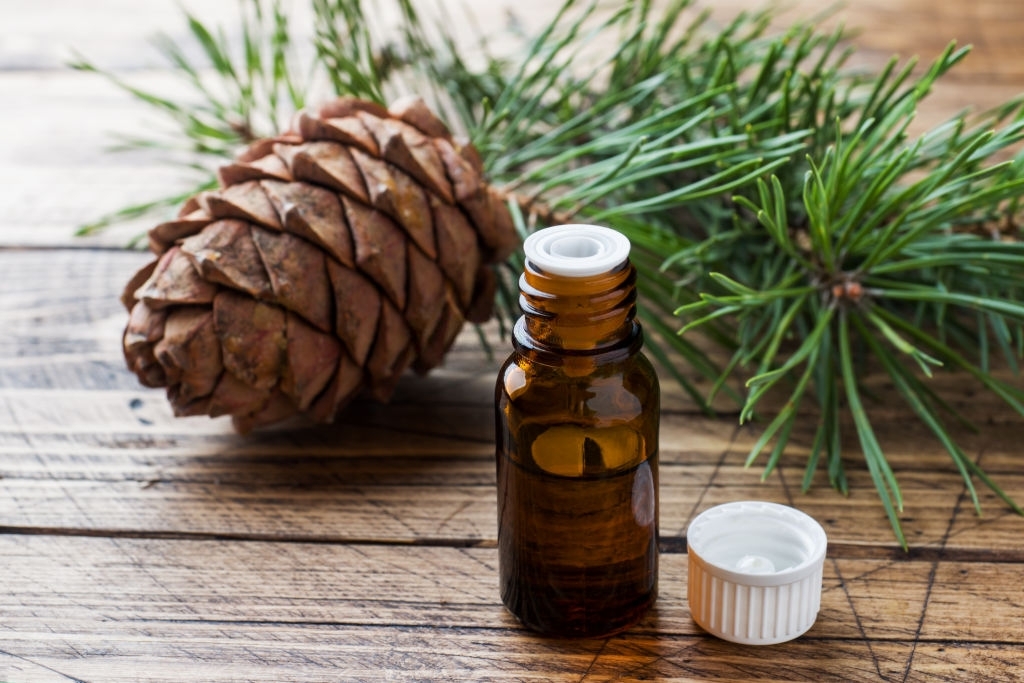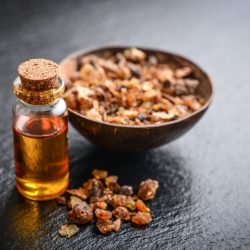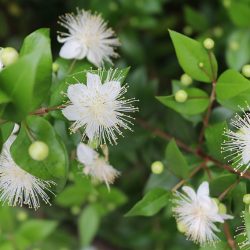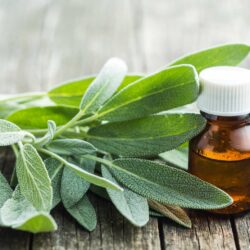Black spruce is native to Canada’s boreal forest. For centuries, Indian peoples have passed on orally from generation to generation the use of this conifer for its therapeutic virtues. It is remarkable to note that very early on, these peoples used the different parts of the plant perfectly and with great discernment, whether applied locally, orally or by respiration.
Latin name:
- Picea mariana
Botanical family:
- Abietaceae or Pinaceae
Producing organ:
- Needles
A little history
Long before black spruce came to us in the form of an essential oil, it was used in traditional medicine by the indigenous peoples of North America. The Amerindians used both needles and cones. The Abenaki made decoctions of cones to combat urinary tract infections. Needles were used to relieve pain and chills.
They were also a good way of preventing scurvy. The resin, often chewed as a tonic, was used to make balms for wounds and burns. As an antiseptic, spruce cleanses the respiratory tract. These uses are still found today in the therapeutic use of black spruce essential oil.
Hildegard of Bingen tells us about the spruce in her Book of the Subtleties of Divine Creatures: “If an epidemic attacks the flocks and ravages them, place fresh branches in front of them so that they can breathe in the smell; or lead the flocks under these trees; they will then begin to cough and expel the rot” Although she uses spruce for veterinary purposes, it is worth noting that she highlights one of spruce’s properties. As an expectorant, it clears mucus from the bronchial tubes.
Native to North America, black spruce was revered by the American Indians. They used it in shamanic rituals and traditional medicine as an antiseptic and for its expectorant properties.
Black spruce is native to Canada’s boreal forest. For centuries, Indian peoples have passed down the use of this conifer for its therapeutic properties from generation to generation.
It is remarkable to note that very early on, these peoples used the different parts of the plant perfectly and with great discernment, whether applied locally, orally or by respiration.
For example, they boiled fir needles and inhaled the vapours to relieve congestion in the respiratory tract in the event of a cold or flu.
They also wrapped a cloth soaked in an infusion of twigs around the stomachs of pregnant women to encourage childbirth or the expulsion of the placenta.
The icy conditions and varied topography of the boreal forest allow these majestic trees to thrive from one generation to the next. However, this abundance of splendidly large trees brings with it a major problem: waste.
The extraction ofessential oil from black spruce is the epitome of environmental stewardship. Although much of the wood from the black spruce is used in the paper industry, what remains of the tree is a major environmental problem. Given its many benefits, it made sense to steam distil black spruce essential oil by working with these industries and the Forestry Department to make use of black spruce materials that would otherwise be wasted.
Not only is black spruce essential oil good for you, it’s also a smart choice because of its responsible and sustainable distillation.
Long before black spruce came to us as an essential oil, it was used in traditional medicine by the indigenous peoples of North America. The Amerindians used both needles and cones. The Abenaki made decoctions of cones, which had the virtue of fighting urinary tract infections. Needles were used to relieve pain and chills. They were also a good way of preventing scurvy. The resin, often chewed as a tonic, was used to make balms for wounds and burns. Antiseptic, spruce cleanses the respiratory tract. As we’ll see below, these uses are still found today in the therapeutic use of black spruce essential oil.
A sacred and medicinal plant, spruce was also one of the so-called “utilitarian” plants. The Amerindians of Quebec made canoes from cedar and birch wood, tied together with spruce roots that acted as sewing thread. Resin from the same tree was then used to make the boat watertight.
Closer to home (geographically speaking), Hildegard of Bingen mentions the spruce in her Book of the Subtleties of Divine Creatures (p. 70): “If an epidemic attacks the flocks and ravages them, fresh branches should be placed in front of them, so that they can breathe in the smell; or the flocks should be led under these trees; they will then begin to cough and expel the rot” Although she uses spruce for veterinary purposes, it is worth noting that she highlights one of spruce’s properties. As an expectorant, it clears mucus from the bronchial tubes.
Just as globose eucalyptus is not the only eucalyptus used in aromatherapy, there are other spruces: white(Picea alba), red(Picea rubens) and blue(Picea pungens). The properties and uses of all three are very similar to those of black spruce, although it is worth noting that blue and red spruce have greater analgesic power.
Composition of black spruce oil
Black spruce oil is extracted from the needles, branches and bark of the tree. It contains a variety of bioactive compounds, including monoterpenes, sesquiterpenes, esters, alcohols and ketones. These compounds give it antimicrobial, anti-inflammatory, analgesic and antioxidant properties.
What are the pharmacological properties of Black Spruce oil?
Black spruce oil is known for its medicinal and healing properties. But what exactly are the pharmacological properties of this essential oil? In this section, we will explore in detail the effects of Black Spruce oil on the human body, based on recent scientific research.
Hormonal properties :
Black spruce oil is considered a great hormone-like essential oil. It is in fact cortison-like(general tonic and neurotonic), stimulates the gonads and acts on the thyroid (action on emotions, in hyperthyroidism).
Antibacterial properties:
Black spruce oil is known for its antibacterial and anti-infectious properties. Studies have shown that this essential oil is effective against many types of bacteria, including antibiotic-resistant strains. For example, a study published in the Journal of Antimicrobial Chemotherapy showed that black spruce oil was effective against methicillin-resistant strains of Staphylococcus aureus, a bacterium commonly associated with hospital-acquired infections. Black spruce oil is also effective against fungal and parasitic infections, particularly when combined with other essential oils with similar properties.
Because of its antibacterial properties, black spruce oil is often used in aromatherapy to help boost the immune system and prevent infections. It is also used in the manufacture of natural cleaning products to eliminate bacteria and germs in the home. However, it is important to note that black spruce oil should not be used as a sole treatment for serious infections and that the advice of a healthcare professional should be sought if symptoms persist.
Anti-inflammatory properties :
Stimulating the pituitary-cortical-adrenal axis, this essence is therefore of interest in prolonged inflammatory conditions. Its anti-inflammatory action is explained in particular by inhibition of lipoxygenase, induction of IL-11 and reduction in pro-inflammatory cytokines.
Central nervous system properties :
Active on SNA Ʃ , spruce is analgesic, central and peripheral analgesic, as well as slightly sedative, even after inhalation. It therefore induces relaxation via the vegetative nervous system.
Other properties :
- Adaptogenic
- Antitussive, expectorant
- Mild antispasmodic(bornyl acetate)
- Lymphotonic and decongestant(alpha-pinene)
- Anti-cancer, potentiates the anti-tumour activity of 5-FU on SGC-7901 human gastric cancer cells by inducing apoptosis and DNA fragmentation
- Anti-abortive effect through immunological activity
Black Spruce Bark: An innovative solution for preserving potatoes?
In the search for sustainable, environmentally-friendly solutions for storing potatoes, the study of black spruce extracts is proving promising. Black spruce, a tree abundant in Canadian forests, offers an under-utilised biomass*, in particular its bark, which could be used for purposes other than energy production. This research is part of a wider movement to rethink the use of forest residues, traditionally burnt, to derive a wide range of biological benefits.
*What is biomass?
Biomass refers to all organic matter of plant or animal origin that can be used as a source of energy or to produce various products. It includes plants, agricultural and forestry waste, algae and organic waste from domestic and industrial sources.
Methodology
The study involved creating extracts from black spruce (Picea mariana Mill.) bark using various methods: water extraction, ethyl acetate fractionation of the aqueous extract, and acid-base extraction. This diversity of techniques made it possible to obtain varied profiles of bioactive components.
Targeting pathogens and inhibiting germination
A series of pathogens affecting potatoes, such as Fusarium oxysporum, Fusarium graminearum and others, were selected to test the antimicrobial efficacy of the extracts. At the same time, the anti-germination effect of these extracts was assessed, considering germination to be a major challenge in potato storage.
Significant results
The results showed that two types of black spruce extract – ethyl acetate extract and essential oil – had significant antimicrobial and anti-germination properties. Ethyl acetate extract effectively inhibited the growth of various microorganisms at varying minimum concentrations, while essential oil completely prevented sprouting in potatoes at a concentration of 25% (w/w).
Synergy and application potential
A remarkable synergy was observed when the two extracts were used together, amplifying their efficacy. This discovery paves the way for the formulation of a unique product integrating the benefits of both extracts to effectively control post-harvest losses of potatoes due to rot and sprouting.
Conclusion and outlook
These findings suggest that black spruce extracts could offer an environmentally friendly alternative to the synthetic chemicals commonly used in potato storage. In addition, this use of black spruce residues illustrates the potential for exploiting forest by-products in agricultural and food preservation applications, marking a step towards more sustainable management of natural resources.
Are there any precautions to be taken when using Black Spruce oil?
- Do not use in combination with cortisone, as there is a risk of drug interaction
- Do not use over a prolonged period, as there is a risk of resting the pituitary-adrenal axis and suffering acute adrenal insufficiency if you stop taking the essential oil
- Avoid applying the essential oil in the evening (or before any period of rest)
- Not recommended for people suffering from osteoporosis, due to the inherent risk of decalcification
- Not recommended for children under 7 years of age
- Dermocaustic in pure form, dilution required
- Enzyme inhibitor, risk of drug interactions(α-pinene), ask your pharmacist for advice
- Epileptic in high doses(bornyl acetate), respect the prescribed doses
- Not recommended for people with asthma or epilepsy
- Not recommended during the first 3 months of pregnancy
- Prolonged use is not recommended in people with asthmatic or renal respiratory disorders
- Do not use in case of whooping cough
- Do not swallow, inhale, bathe or diffuse
- Recommended for use on the skin only
- Harmful if swallowed or inhaled. High concentrations are extremely destructive to mucous membranes, the upper respiratory tract, eyes and skin.
- Inhalation of black spruce essential oil may cause irritation of the mucous membranes. In sensitive individuals, it may actually increase bronchospasm.
Medical literature and clinical trials:
- Chartier C. Red spruce, from tradition to current use. Phytotherapy
- Garneau F.X., Collin G., Gagnon H. and Pichette A.,Chemical Composition of the Hydrosol and the Essential Oil of Three Different Species of the Pinaceae Family : Picea glauca (Moench) Voss, Picea mariana (Mill.) B.S.P., and Abies balsamea (L.) Mill, Journal of Essential Oil Bearing Plants, 2012
- Legault J., Girard-Lalancette K., Dufour D. and Pichette A., Potential of Bark Extracts from Boreal Forest Conifers, Antioxidant, 2013
- PRUNIER J., Etude de l’adaptation au niveau moléculaire chez l’épinette noire (Picea mariana, [Mill.] B.S.P.), Thèse doc. Univ. Laval, Québec, 2012
- Michel F., Traité d’aromathérapie scientifique et médicale, 3rd edition – Les huiles essentielles – Fondements et aide à la prescription, 2017
- Black spruce extracts reveal antimicrobial and sprout suppressive potentials to prevent potato (Solanum tuberosum L.) losses during storage. July 2021. Journal of Agriculture and Food Research 5(3):100187





